#Interventions
Text
Whump Prompt #1346
Anon asked:
Any ideas for an athlete whumpee? Specifically a sprinter who constantly pushes herself harder than she should, much to the frustration of her sister and partner.
Love your prompts btw! <3
Thank you for the kind words! I have a few ideas for you:
TW: Mentions of substance abuse:
Your stubborn sprinter probably ignores signs of injury/strain. Maybe a huge competition is coming up and they cannot afford to rest. The relentless training could lead to a serious setback if they’re not careful.
Because of this over training, the whumpee becomes agitated, and this affects their relationships. Maybe they’re more on edge because of the pain they’re in, or they’re just so focussed on the goal, they they lose sight on what’s important.
Do the supporting characters hold an intervention-of-sorts? At which the whumpee storms out after a heated argument claiming “Fine, I’ll do it on my own!”
Does the whumpee abuse things like supplements and steroids? This could affect their body in more ways than one.
Going back to the relationship theme: the constant pressure to perform strains the relationships as the sister and partner struggle to communicate their concerns and the whumpee begins to resent their interference.
However, sooner or later the sprinter has a huge competition while dealing with an injury/the consequences of overtraining. They’re torn between the desire to prove themselves and the need to prioritize their health. After vowing to stop interfering, the partner/sister sit back to watch the train wreck.
The real question is, do they collapse before, during or after the event? For added angst, they could have a moment before the event that they nearly do, but have to push on for the sake of their ego.
When the collapse inevitably happens, the sprinter reflects on their choices and realizes the toll the overtraining has taken on their body, leading to a moment of regret and self-awareness.
After the whumpee has pushed them away, how willing are the caretakers to help them get back on their feet?
#Whump#writing#prompts#angst#hurt#comfort#sports injury#sport whump#interventions#overtraining#accidental overdose tw#injury#collapse#substance abuse tw
25 notes
·
View notes
Text
STAND WITH NIGER 🇳🇪💪
8 notes
·
View notes
Text

Bunny#1- Stevie it's time for an intervention
Stevie- why? What's wrong?
Bunny#3- YOUR EATING PEOPLE!!!
Bunny#2- (mutters) only the ones that deserve it
3 notes
·
View notes
Text
Le tragique intervient exactement à ce moment où le dérisoire ne parvient plus à être perçu comme fun ; c'est une espèce d'inversion psychologique brutale, qui traduit l'apparition chez l'individu d'un irréductible désir d'éternité. La publicité n'évite ce phénomène contraire à ses objectifs que par un renouvellement incessant de ses simulacres ; mais la peinture garde vocation à créer des objets permanents, et dotés d'un caractère propre ; c'est cette nostalgie d'être qui lui donne son halo douloureux, et qui en fait bon gré mal gré un reflet fidèle de la situation spirituelle de l'homme occidental.
''Le monde comme supermarché et comme dérision" in Interventions – Michel Houellebecq
#citation#books#livre#quotes#litterature#book quotes#quote#michel houellebecq#interventions#Houellebecq#auteur français#french author#littérature française
4 notes
·
View notes
Note
writing journal ask, 9, 99, 199
‘Bad Ideas’ - My Writing Journal - Is Dead
Thanks for the ask, @chaosandwonder !
Page 9… Was the first page of notes for what became "Interventions". You can read it on AO3 if you like, but it wasn't one of my better works. [ https://archiveofourown.org/works/14902523/chapters/34516040 ]

Page 99… is a worldbuilding bio page of Ulannium Kaarz and Illaynah Antilles of my Halcyon Legacy. I have a lot of random notes about them. I can't show you the whole thing, but here are some juicy bits.

Page 199… I can't share this one, but its a WIP for a piece that will retell the finale to KOTET - the final battle between Valkorion and Corellan.
Thanks for the asks!
#swtorpadawan asks#chaosandwonder#interventions#‘Bad Ideas’ - My Writing Journal - Is Dead#bad ideas#writing journal#oc: ulannium kaarz#oc: illaynah antilles#fideltin rusk#hope
9 notes
·
View notes
Text
The Positive Outcomes of Music Therapy For Individuals With Autism
Written By: Alan Berkeley
Prominent 19th-century writer Berthold Auerbach once wrote that “music washes away from the soul, the dust of everyday life.” Music is often cited as one of the few “universal” languages that bring joy to everyone regardless of their background, and years upon years of research have shown that this is no coincidence. Every aspect of music, from rhythm to melody to harmony to dynamics, influences our perception and behavior. As such, the use of music as a therapeutic tool is one that warrants analysis, particularly to assist those on the autism spectrum.
A Brief History of Music Therapy
The American Music Therapy Association (AMTA) was founded in 1950 (it was known then as the National Association of Music Therapy or NAMT) (AMTA, 2022). Prior to its founding, programs that studied music therapy were limited to a select few college campuses. However, numerous music organizations and hospitals had a growing interest in using music to treat veterans of the second world war. In subsequent decades, professional music therapists were able to find increased stability in their work through more solid backing from various music organizations. Then, in 1971, the music therapy program at NYU became the first music therapy degree program to be accredited by the National Association of Schools of Music (NASM) (AMTA, 2022). The ’80s and ’90s saw a proliferation of music therapy knowledge and growth, whether it be through the publication of landmark music therapy publications like the NAMTs Music Therapy Perspectives, or through the unification of some of the most prominent players among music therapy groups in the NAMT and the American Association of Music Therapy (AAMT) (AMTA, 2022). Since then, the study of music therapy has only continued to grow. An analysis of music therapy trends by Li, Weng, and Wang (2021) found over 100 official music therapy publications worldwide, five times more than the number at the turn of the millennium. Let’s look at what some of these publications have revealed to us regarding music therapy and its impact on those with autism.
Music Therapy and Autism
Research across the world has indicated positive outcomes for individuals with autism who receive music therapy. Both social and communication skills have been shown to improve through a plethora of methods including vocalization and singing, improvisation, instrumental instruction, or simply listening to music. For example, a review of 10 music-therapy-related studies by Geretsegger et al. (2014) found these methods to be significantly superior to standard care looking to provide similar outcomes, whether it be engaging in social interaction in a variety of contexts, social-emotional reciprocity, or communication either verbal or non-verbal in nature. Music therapy appears to aid non-verbal communication greatly, as even studies that may not have found significant results overall, like the aforementioned Geretsegger et al. (2014) review, still found positive effects in this area (see Gattino et al. (2011)), likely due to music’s power to flexibly communicate emotions, needs, and values (Gfeller, 2002). The way that music can transcend thought and evoke meaning through emotion is one of the reasons it may be such an effective therapeutic tool, particularly for individuals on the autism spectrum. The benefits of music therapy are supported in children with autism as well, with a study conducted by Kim, Wigram, and Gold (2009) finding that improvisational music therapy in particular promoted positive engagement and emotional synchronicity between children and their therapists, indicating that not only could music therapy be more effective than standard therapy, but it may also be more enjoyable for those receiving it. Kaplan and Steele (2005) found that the positive impacts of music therapy may generalize to environments outside of the clinic, as well. 100% of the caregivers they surveyed as a part of their study reported that the skills learned through musical interventions in areas such as language skills, behavioral skills, and even motor skills appeared to have transferred outside of therapy.
Still, while many of these studies point to music therapy as a highly potent source of positive outcomes for neurodivergent individuals, it is important to note that further research is still needed to cement this claim. Many of the studies mentioned had small sample sizes, meaning more research must be conducted in order to examine where and how music therapy interventions can best be utilized by those with autism. If the outcomes of this research continue to be positive across a wide array of skills, therapists can be confident that they can use music as the vessel for positive change that it is often intended to be.
References
American Music Therapy Association. Music Therapy Historical Review | American Music Therapy Association (AMTA). (n.d.). Retrieved June 27, 2022, from https://www.musictherapy.org/about/music_therapy_historical_review/
Gattino, G. S., Riesgo, R. D. S., Longo, D., Leite, J. C. L., & Faccini, L. S. (2011). Effects of relational music therapy on communication of children with autism: a randomized controlled study. Nordic Journal of Music Therapy, 20(2), 142-154.
Geretsegger, M., Elefant, C., Mössler, K. A., & Gold, C. (2014). Music therapy for people with autism spectrum disorder. Cochrane Database of Systematic Reviews, (6).
Gfeller, K. E. (2002). Music as communication.
Kaplan, R. S., & Steele, A. L. (2005). An analysis of music therapy program goals and outcomes for clients with diagnoses on the autism spectrum. Journal of music therapy, 42(1), 2-19.
Kim, J., Wigram, T., & Gold, C. (2009). Emotional, motivational and interpersonal responsiveness of children with autism in improvisational music therapy. Autism, 13(4), 389-409.
Li, K., Weng, L., & Wang, X. (2021). The state of music therapy studies in the past 20 years: a bibliometric analysis. Frontiers in Psychology, 2168.
Silverman, M. J. (2008). Nonverbal communication, music therapy, and autism: A review of literature and case example. Journal of Creativity in Mental Health, 3(1), 3-19.
3 notes
·
View notes
Text
1704 TIME-SPACE INTERVENTIONS
1704 TIME-SPACE INTERVENTIONS -Gautam Shah
Interventions occur in design and processes to interpose the existence. The realities of space and time are separated or linked, with distance as the character. The mark forms a new situation or circumstance, which, gives a distinction to the separated edges. The space or time insertion is intentional or its recognition, a circumstantial event. The…
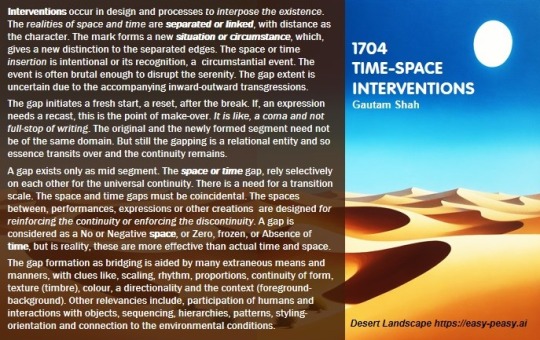
View On WordPress
0 notes
Text
Important Tips To Follow While Undergoing Fertility Treatment
It is estimated that 15% of reproductive-age couples in the world experience difficulty in getting pregnant, i.e. at least 50 million couples. About 15-20 % of these couples are diagnosed with unexplained infertility. These couples go through various fertility treatments to improve their likelihood of getting pregnant.
Body weight, body composition, physical activity, and nutrients intake are…

View On WordPress
#bloganuary#dailyprompt#diet#Fertility#health#infertility#interventions#iui#IVF#lifestyle modification#medication#Ovarian stimulation#pcos#pregnancy#sleep#stress
1 note
·
View note
Link
A rising tide
#Canada#Palestine solidarity#activism#organizing#rallies#blockades#demonstrations#interventions#protests
0 notes
Text
Whump Prompt #1001
Submitted by Anon - thanks!
CW: Alcoholism.
Character A hasn't gotten over the death of Character B and drinks to cope. Characters C and D want to stage an intervention to help Character A but they aren't confident it will work.
#i like this!#doubt#whump#emotional whump#coping mechanisms#bad coping mechanisms#drinking to cope#writing#prompts#interventions#death of a loved one
45 notes
·
View notes
Text
Nous en savons davantage sur ce que fomente Macron dans le dos du peuple.
#guerre en ukraine#ukraine russie#russie ukraine#russie#ukraine#france#emmanuel macron#president macron#macronie#guerre#interventions#intervention
4 notes
·
View notes
Text

"Pediatric surgery has such a variety of diagnoses and surgical interventions. To be able to care for children in the perioperative time frame can be complex and gratifying at the same time."
Morgan Mocniak, Pediatric Nurse Practitioner, General Surgery, Nationwide Children's Hospital - Toledo
#Toledo#NCHT#Nationwide Children's Hospital - Toledo#Surgery#Interventions#Perioperative#Morgan#Mocniak#Nurse#Nurse Practitioner#Advanced Practice Provider#Advanced Practice Provider Week
0 notes
Text
Choose Calmness Over Chaos

Thank you to leading health and fitness writer Peta Bee for featuring our audio-related work in her news.com.au piece on stress.
Peta provides no fewer than 25 super ways to beat stress and optimise the mind–body relationship: https://www.bodyandsoul.com.au/wellness/mental-health/the-25-best-ways-to-beat-stress/news-story/426ee2ca26ba269eab114b1e2bc50621
#stress #stressmanagement #wellbeing #wellness #tips #interventions #music #exercise
1 note
·
View note
Text


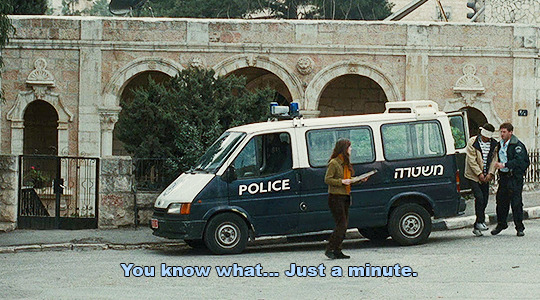
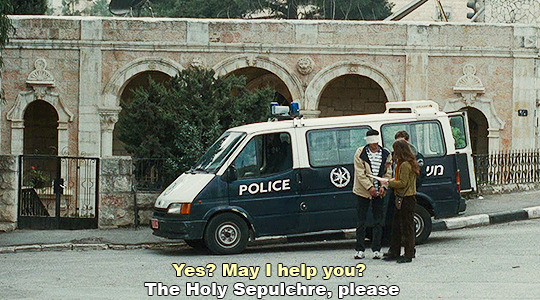
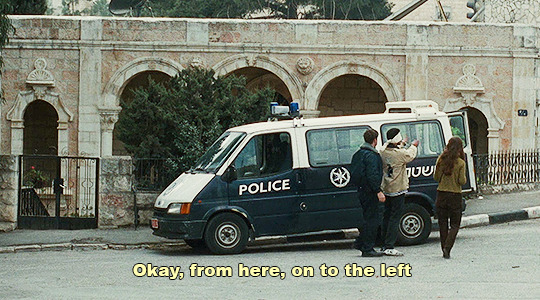

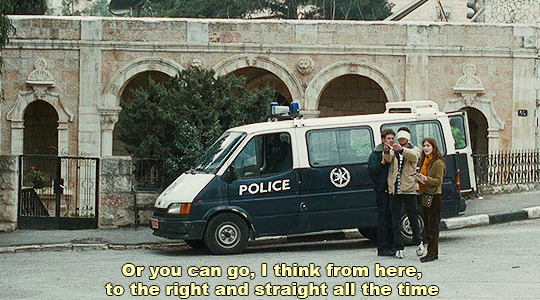


Divine Intervention (2002, Elia Suleiman) يد إلهية
#divine intervention#elia suleiman#يد إلهية#whose home#screencaps#post#film#albertserra#i did not pick the right subtitle font did i
8K notes
·
View notes
Note
for the journal questions (congrats on filling it up too!! :D) -- 9, 44, and 101? :D
‘Bad Ideas’ - My Writing Journal - Is Dead
Thanks for the ask, @itstheelvenjedi !
I can actually post page nine!
"Interventions" featured Corellan Halcyon - post-KOTET - and was written as a lead-in to Kira's return.
It was titled "Interventions" because on the one hand, the Alliance members are intervening on Corellan's rescue mission, and on the other hand, its sort of like an intervention in that they are say "Hey - you don't need to go it alone just because this isn't an 'Alliance' mission."
I rarely talk about it much, because its execution was SO flawed. Turns out having a dozen characters or more in a room is a bad setup when everyone should be trying to speak.
If you want to read the finished product, here's the address on AO3.
https://archiveofourown.org/works/14902523/chapters/34516040

Page 44 … yeah, I can post that one, two!
The top includes some material I was adding to my "Perspective" story. You can read that one on AO3 here:
https://archiveofourown.org/works/16241420/chapters/46208005#workskin
(It was fun writing from the perspective of a Flesh Raider mob!)
The bottom is some world-building stuff I was working on. The fates of many of the Masters of the Jedi council were left unresolved at the time I was writing this. (Some still are.)
So the idea was I'd make a list of all the Masters named to the council in SWTOR works, and establish what happened to them. (This was specific to my Halcyon Legacy)
You may certainly recognize some of the names there - there's Ulannium, my Barsen'thor!
Most of it isn't "canon" in my story yet ... but there are some spoilers.

Page 101… I cannot show you...
Just in case I ever do turn it into a proper WIP. But - the story was titled "Student", and its sort of a before and after piece with Corellan meeting Satele for the first time on Tython as a padawan. Then flash forward eleven years later, and he's talking to her on Odessen.
Needless to say, the contrast is significant. Corellan was different, and so was Satele.
That one… I've struggled to turn into a proper story. Its just notes at the moment.
There's also some world-building bio notes near the bottom of the page about Belea Kaur, who I still hope to do something with someday.

Thanks again for the asks!
#swtorpadawan asks#swtorpadawan writes#‘Bad Ideas’ - My Writing Journal - Is Dead#itstheelvenjedi#writing journal#bad ideas#interventions#perspective#jedi council#halcyon legacy#the halcyon legacy#oc: corellan halcyon#oc: ulannium kaarz#oc: belea kaur
4 notes
·
View notes
Text
Web3, Music, and Neurodivergence: A New Model For Digital Art and Learning
Written By: Alan Berkeley
We often think of the internet as the solution to a lot of problems. Whether it is a quick Google search or a YouTube tutorial, the web is now the place where we learn and engage ourselves the most. However, while younger generations often contemplate how people lived before the internet, most do not consider how the internet may evolve in the future. This future is rapidly approaching reality through the proliferation of Web3, a new platform that touts itself as the next phase in the progression of the internet. As the integration of Web3 into more common usage hastens, it will be essential to analyze how the platform can be used to help those in the music industry be appropriately supported, as well as how it may be used to help neurodivergent individuals.
What is Web3?
As is the case with any new technological medium, Web3 can be difficult to grasp without a deep understanding of certain technical concepts, so we won’t go into that here, particularly as it is not rigidly defined. Fundamentally, though, Web3 describes a new version of the internet defined by features like cryptocurrency, NFTs, and blockchains (Ethereum.org). Decentralization lies at the core of the Web3 structure. As a platform, it is not owned by any single entity, an aspect that its supporters claim is an asset, as ownership is distributed more evenly among users. Furthermore, the usage of cryptocurrency as the main transaction mechanism represents a new method of payment, moving on from the “outdated” structures of banks and other payment processors (Ethereum.org). Equal access is another benefit of Web3 (in theory, at least) and allows for increased transparency and privacy for its users in comparison to the current version of the internet known as Web2. While these factors all point to an improved version of the internet we use now, there are still some kinks that need to be addressed before Web3 can penetrate the general public. The barrier to entry is still too high, as extensive technical knowledge is required to use the platform to your advantage. Also, the cost of transactions through cryptocurrency is still quite high, meaning it is only likely to be viable for more developed countries to utilize Web3 at the moment. Nevertheless, Web3 is still only in its infancy, so these shortcomings will likely be improved with time as companies seek to increase the decentralization within the network.
How Do Musicians Use Web3?
Despite Web3 being in its growth stage, numerous musicians have already taken advantage of its merits. Artists such as Steve Aoki, Linkin Park frontman Mike Shinoda, and rapper Nas have all dipped their toes into the NFT (non-fungible token) world, one which has come to the forefront of Web3-related conversation. Even legends such as Whitney Houston and the Wu-Tang Clan have had their work sold as one of these digital tokens (Harris & Thomas, 2022). From singles to entire LPs to access to royalty rights, musicians are employing NFT technology across a wide scope. The most important advantage for artists in the Web3 universe stems from control and payment, with independent musicians benefitting in particular. Through NFTs, earnings that once went to record companies are now placed directly in the hands of the artists themselves. In the streaming era, where one play earns the artist a fraction of a cent (according to Routenote (2022), Napster and TIDAL are two of the only major services that pay more than one cent per stream, a rarity in digital streaming), NFTs provide a medium where artists can decide how much they feel their work is worth and be compensated accordingly. The transparency aspect is another facet of Web3 that should appeal to artists. All of the documents within the Web3 space are available to the public, meaning that signing contracts becomes much more trustworthy and less prone to the vague and deceiving language that has almost become a cliche in the music industry (Wright, 2022). As a result, the power that Web3 may have to revolutionize digital commerce as we know it may translate into the music industry as well, giving artists their fair share of their creations and allowing them to avoid the many pitfalls that can come with being a professional musician.
What Kind of Benefits Can Neurodivergent Individuals Gain From Web3 Assets?
In the introduction, the internet was framed as a learning tool, and while Web3 has endless potential in other areas, one can assume that it will continue to provide easy access to the vast wealth of knowledge that its predecessors have. In fact, Web3 may even make digital learning more accessible to neurodivergent people, particularly in relation to the arts. When it comes to sound, for example, people with autism can be overloaded by the information in their environment because they codify and interpret sounds in higher quantities (Rosenhall et al., 2003). Web3 may make applications like pyka_loop, which improves the ease of processing sounds in the environment to create music, more widely available to those who can benefit from it (Damiani, 2017). Improving digital learning methods through Web3 also has implications for the development of music therapy techniques for individuals with autism. Virtual reality (VR), for example, has come into the spotlight in conjunction with Web3 and has already been shown to be useful for interventions among autistic individuals (Johnston, Egermann, & Kearney, 2018). This medium allows for exploration in a real-world environment that can be controlled, allowing for practice with social and professional interactions in a safe space. As the popularity of Web3 leads to increased use of VR, the integration of other technologies like motion capture devices can provide highly interactive environments for those with autism to cultivate their social skills in a manner that is less likely to overwhelm them, while still keeping them motivated and engaged.
So, as Web3 continues to develop and make its way into the minds of the general populace, we would be remiss to not give our best effort to develop strategies that can benefit both musicians and neurodivergent people. Once the imperfections of Web3 are eliminated, it has the potential to be a revolutionary tool for learning and the arts, providing transparency, accountability, and accessibility for all.
References
Damiani, L. M. (2017). Art, design and neurodiversity. Electronic Visualisation and the Arts (EVA 2017), 183-191.
Harris, C., & Thomas, L. (2022, June 2). The top music NFT moments of All time. nft now. Retrieved June 17, 2022, from https://nftnow.com/music/top-music-nft-moments/
How much music streaming services pay per stream. RouteNote Blog. (2022, February 18). Retrieved June 17, 2022, from https://routenote.com/blog/how-much-music-streaming-services-pay/
Johnston, D., Egermann, H., & Kearney, G. (2018). Innovative computer technology in music-based interventions for individuals with autism moving beyond traditional interactive music therapy techniques. Cogent Psychology, 5(1), 1554773.
Rosenhall, U., Nordin, V., Brantberg, K., & Gillberg, C. (2003). Autism and auditory brain stem responses. Ear and hearing, 24(3), 206-214.
Thomas, L. (2022, January 6). 3LAU’s music NFT platform Royal Announces First Drop featuring Nas. nft now. Retrieved June 17, 2022, from https://nftnow.com/news/3lau-royal-announces-music-nft-drop-with-nas/
What is blockchain technology? - IBM Blockchain. IBM. (n.d.). Retrieved June 17, 2022, from https://www.ibm.com/topics/what-is-blockchain
What is web3 and why is it important? ethereum.org. (2022, June 13). Retrieved June 17, 2022, from https://ethereum.org/en/web3/
Why is web3 important? A beginner’s guide “ moralis ” The ultimate web3 development platform. Moralis “ The Ultimate Web3 Development Platform. (2022, March 27). Retrieved June 17, 2022, from https://moralis.io/why-is-web3-important-a-beginners-guide/
Wright, W. (2022, April 20). Here’s how Web3 is transforming the music industry. The Drum. Retrieved June 17, 2022, from https://www.thedrum.com/news/2022/04/20/here-s-how-web3-transforming-the-music-industry
2 notes
·
View notes